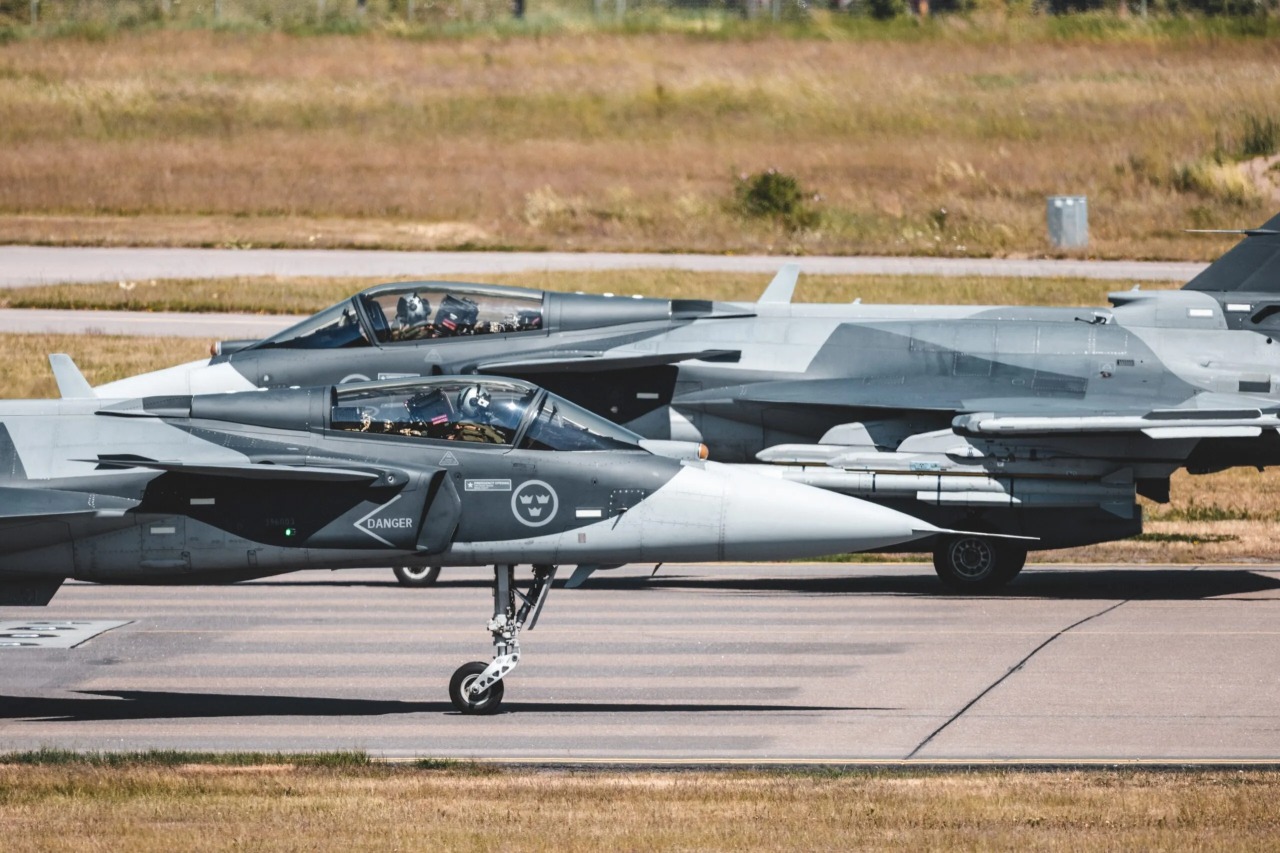Ahead of the mega congregation of aircraft at Aero India 2025 in Bangalore, Swedish Saab is renewing its pitch to sell Gripen fighter jets to the Indian Air Force (IAF).
The IAF, looking to arrest the dwindling fighter squadrons, is looking to acquire 114 Medium-Role Fighter Aircraft. Saab insists that the Gripen-E will be the fastest-delivered fighter aircraft if chosen.
Kent-Ake Molin, Head of the Gripen India campaign, said: “Gripen’s exceptional capabilities align seamlessly with India’s defense needs, offering advanced weapons, cutting-edge sensors, countermeasures systems, and pilot-friendly Human-Machine Collaboration (HMC).”
However, besides cutting-edge capabilities, the IAF is looking for an organization that can deliver combat jets as soon as possible and transfer the most technology to the Indian industry.
Saab Gripen is one of the contenders for the IAF’s likely 114 MRFA. Swedish defense giant Saab has partnered with local manufacturers to rapidly indigenize the platform.
Saab has asserted that if awarded the contract, it would deliver the first Gripen-E/F aircraft to the IAF within three years. Molin said: “The Gripen E aircraft will be the fastest delivery to the IAF on signing of the contract.”
Saab’s proposal includes the transfer of Maintenance, Repair, and Overhaul (MRO) capabilities, the local production of aircraft components and engine assembly, and the establishment of a state-of-the-art Gripen Design Centre in Bangalore.
The design center will harness local engineering talent for advanced avionics and software development. Saab insists that this will allow India to develop systems tailored to its specifications and ensure complete control over its fighter systems, including the ability to execute upgrades and modifications.
Saab is ready to set up full-scale production in India, not just airframes but also systems and software. It has a roadmap for rapidly indigenizing the platform.
Gripen’s technology transfer offer also gives India the opportunity to build a global export center. “We would like to position India as a potential export hub for Gripen E aircraft and related systems. Our proposal promises a self-reliant defense industry that supports itself and serves international markets as well,” Kent-Ake concludes.
The IAF announced the 114 MRFA tender in April 2018. The other contenders in the fray are Boeing F-15EX Eagle II, Lockheed Martin F-21 (a variant of F-16V with 14 India-specific customizations), Dassault Rafale, Eurofighter Typhoon, Saab JAS-39 Gripen E/F, Mikoyan MiG-35, and Sukhoi Su-35.
Saab’s technology transfer offer goes far beyond Gripen; it includes potentially supporting indigenous programs like the Light Combat Aircraft (LCA) and Advanced Medium Combat Aircraft (AMCA).

Rising Graph Of Saab Gripen
The Saab JAS 39 E/F Gripen is a light, single-engine supersonic multirole fighter aircraft manufactured by Saab AB, a Swedish aerospace and defense company.
The Gripen has a delta wing and canard configuration, a relaxed stability design, and fly-by-wire flight controls. The first flight took place in 1988, and the first serial production airplane was delivered in 1993.
The initial variant entered service with the Swedish Air Force in 1996. The latest variant, the JAS 39E/F Gripen, began entering service with the Swedish and Brazilian Air Forces in 2019.
Exclusive: How Indian MiG-21s Thrashed F-15 Eagles During Military Drills, Shocking USAF Pilots
JAS 39E is the single-seat production version developed from the Gripen NG program, and JAS 39F is the two-seat version. JAS 39 E/F has a larger fuselage, a more powerful engine, increased weapons payload capability, and a new cockpit, avionics architecture, electronic warfare system, and other improvements. As of 2023, more than 300 Gripen variants have been built.
Saab Gripen had been a contender for the earlier version of the MRFA deal – the Medium Multi-Role Combat Aircraft deal. However, after nearly 15 years, the technologies offered on the Gripen E are the latest.
Significant AI is embedded for quicker and better operational decision-making, and the network-enabled capabilities have been greatly enhanced.
One plus point is that all operators have access to Gripen’s source code and technical documentation, allowing for upgrades and new equipment to be independently integrated.
The single-engine Gripen E is the most modern fighter in the competition. Its weaponry, including the Meteor Beyond Visual Range missile, will give the IAF an edge against its adversaries.
The latest high-performance sensors, such as the AESA radar, IRST system, advanced datalinks, and AI-enabled decision support, give the pilot superior situational awareness and the ability to see first and act first.
The IAF is awaiting the Indian government’s issue of an Acceptance of Necessity (AoN) for the deal. As its two neighbors—China and Pakistan—rapidly modernize their air forces, the Indian government has set up a committee to examine the IAF’s future.
Earlier, Air Marshal M. Matheswaran (retired), who has worked on Medium Multi Role Combat Aircraft (MMRCA) and negotiated the Fifth Generation Fighter Aircraft (FGFA) with the Russians, suggested in a conversation with the EurAsian Times that India gets a “risk sharing” partner onboard. Before that, India should bargain with two or three countries simultaneously for maximum leverage.
“We must choose a partner. We need a risk-sharing partner for AMCA and someone who can fill gaps in the development of LCA Mk2. Companies like Saab might be ready to take the mantle,” Matheswaran told the EurAsian Times.




